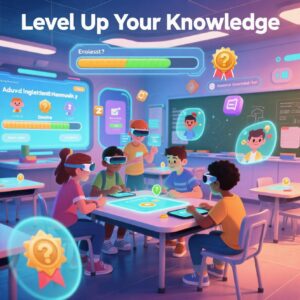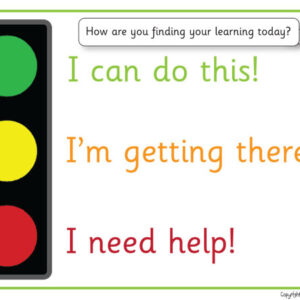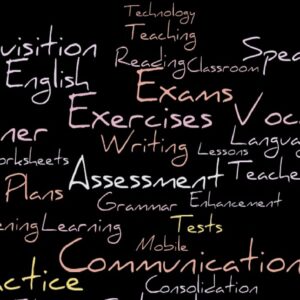One of the most persistent challenges educators face is addressing learning gaps—the disparities in knowledge and skills that students possess when compared to grade-level expectations. These gaps can arise from a variety of factors, including socioeconomic differences, language barriers, learning disabilities, or disruptions such as the global pandemic. Traditional teaching methods often struggle to meet the diverse needs of every student, leaving many learners behind.
Adaptive technology has the potential to transform education by personalizing learning experiences for each student. Adaptive technology leverages artificial intelligence (AI), data analytics, and machine learning to tailor instruction to individual needs, ensuring that no student is left behind.
What Are Learning Gaps?
Learning gaps occur when students fail to acquire the foundational knowledge or skills necessary to progress successfully to the next level of learning. For example:
- A 5th-grade student struggling with multiplication may find it difficult to grasp fractions in 6th grade.
- An English language learner may fall behind in reading comprehension due to limited vocabulary.
These gaps can compound over time, leading to frustration, disengagement, and even dropout rates. Addressing them early is critical to ensuring long-term academic success.
The Role of Adaptive Technology in Bridging Learning Gaps
Adaptive technology is designed to identify and address learning gaps by providing personalized instruction. Here’s how it works:
1. Real-Time Assessment
Adaptive platforms continuously assess students’ performance through quizzes, interactive exercises, and other activities. Unlike traditional assessments, which are static and administered at set intervals, adaptive systems adjust their difficulty levels based on real-time responses. This ensures that students are always working at the appropriate level of challenge.
For example, platforms like Khan Academy use adaptive algorithms to create customized learning paths for students. If a child demonstrates mastery of a concept, the system moves them forward; if they struggle, it provides additional practice and support.
2. Personalized Learning Paths
Once a student’s strengths and weaknesses are identified, adaptive technology creates a tailored learning plan. This might include targeted lessons, remedial content, or enrichment activities. By focusing on what each student needs most, adaptive tools ensure efficient use of instructional time.
One notable example is DreamBox Learning, a math platform that adapts its curriculum dynamically to match a student’s pace and understanding. Teachers receive detailed reports on progress, enabling them to intervene where necessary.
3. Immediate Feedback
Unlike traditional classroom settings where feedback may be delayed, adaptive technology provides instant corrections and explanations. This immediate reinforcement helps students understand their mistakes and learn more effectively.
Tools like IXL Learning offer step-by-step guidance and hints, empowering students to work independently while still receiving support.
4. Engagement Through Gamification
Many adaptive platforms incorporate game-like elements such as badges, leaderboards, and rewards to keep students motivated. Engaging visuals and interactive features make learning enjoyable, encouraging students to spend more time mastering challenging concepts.
Benefits of Using Adaptive Technology
The advantages of integrating adaptive technology into classrooms and homes are numerous:
- Equity: Adaptive tools level the playing field by providing all students with access to high-quality, individualized instruction.
- Efficiency: Educators can focus their efforts on areas where human intervention is most needed, rather than spending time re-teaching basic concepts to large groups.
- Data-Driven Insights: Teachers gain valuable insights into student performance, allowing them to monitor progress and adjust strategies accordingly.
- Flexibility: Adaptive platforms can be used in various settings, including hybrid, remote, and traditional classrooms.
Challenges and Considerations
While adaptive technology holds immense promise, there are some challenges to consider:
- Access to Technology: Not all students have reliable internet access or devices, creating a digital divide.
- Teacher Training: Educators need professional development to effectively integrate these tools into their teaching practices.
- Balancing Screen Time: It’s important to strike a balance between using technology and fostering hands-on, collaborative learning experiences.
To overcome these hurdles, schools and districts must invest in infrastructure, training programs, and equitable resource distribution.
Resources for Getting Started
If you’re interested in exploring adaptive technology further, here are some excellent resources to get started:
- Khan Academy: Free, world-class education for anyone, anywhere. Offers adaptive math and science curricula.
Visit Khan Academy - DreamBox Learning: An award-winning adaptive math program for K-8 students.
Learn More About DreamBox - IXL Learning: Comprehensive adaptive platform covering math, language arts, science, and social studies.
Explore IXL - Edmentum: Provides adaptive solutions for K-12 education, including diagnostic assessments and personalized learning paths.
Check Out Edmentum - Newsela: Offers adaptive reading content aligned with current events and standards.
Discover Newsela
To sum up, closing learning gaps is a complex but achievable goal, especially with the aid of adaptive technology. By leveraging AI-driven tools, educators and parents can provide students with the individualized attention they need to thrive academically. However, successful implementation requires thoughtful planning, adequate resources, and a commitment to equity.
As we continue to navigate the future of education, adaptive technology will undoubtedly play a pivotal role in shaping inclusive, effective learning environments. Let’s embrace these innovations to ensure that every student has the opportunity to succeed.






